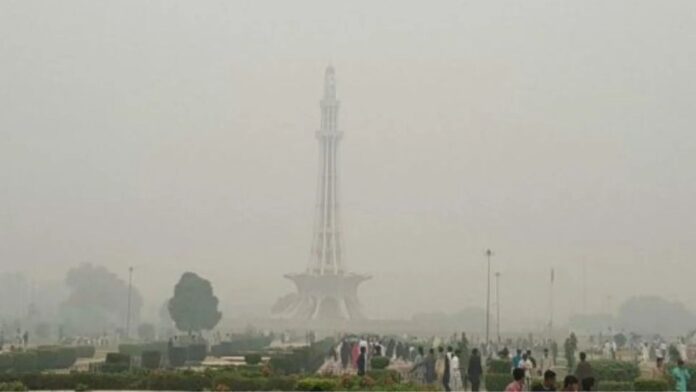Lahore’s brief respite from suffocating smog has come to an end as pollution levels surged once again, just a day after the Punjab government eased restrictions following an improvement in the city’s air quality.
On Friday, Lahore was ranked as the world’s most polluted city in terms of air quality, with its Air Quality Index (AQI) spiking to 502 early in the morning, a sharp rise from the “unhealthy” AQI of 184 recorded the previous day, according to Swiss group IQAir. By 9:30 p.m., the AQI was recorded at 485—still above the 300 mark, which is considered hazardous. Meanwhile, the concentration of PM2.5 particles was over 63.6 times higher than the level deemed acceptable by the World Health Organization (WHO).

In the rankings, New Delhi, India, which had been at the top, dropped to second place for the worst air quality, while Multan, Pakistan’s second-largest city, had an AQI of 354, categorizing it as “hazardous.”
Read More: Azhar Ali Appointed PCB’s Head of Youth Development
The Punjab government had lifted some restrictions on Thursday, allowing outdoor activities to resume after air quality improved in Lahore and other cities. However, the region continues to grapple with persistent smog, which is worsened by toxic air drifting from neighboring India. Factors contributing to this pollution include dust, emissions, and illegal stubble burning on fields.

Senior Minister for Environmental Protection, Marriyum Aurangzeb, earlier described the thickening smog as a “national disaster.” The smog, which reached hazardous levels earlier this month, has prompted authorities to take extreme measures, including the closure of schools, a ban on public access to parks, zoos, playgrounds, and other outdoor spaces, as well as restrictions on open-air cooking at restaurants and construction sites.
Each winter, Lahore faces a dangerous mix of low-grade fuel emissions from factories and vehicles, aggravated by seasonal crop burning by farmers. The cooler temperatures and slow-moving winds trap this pollution, leading to dangerously high pollution levels.

As the WHO warns, breathing in toxic air can have catastrophic health consequences, including strokes, heart disease, lung cancer, and respiratory diseases, all resulting from prolonged exposure.





